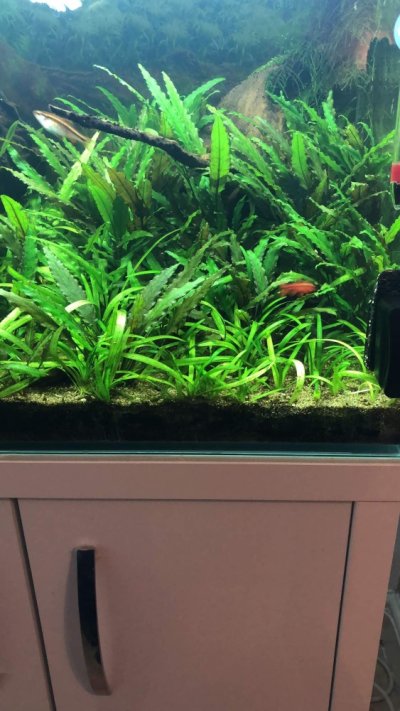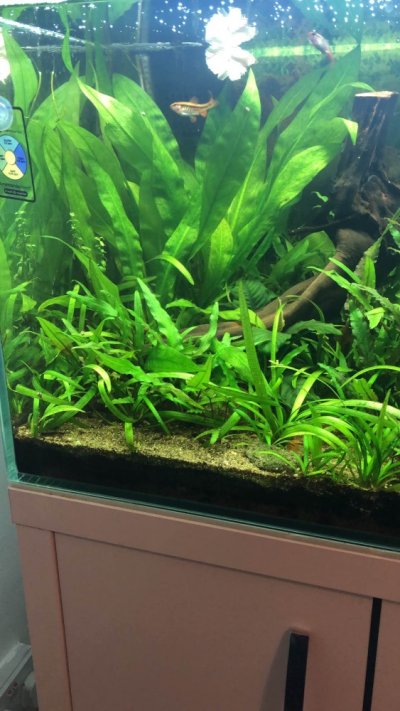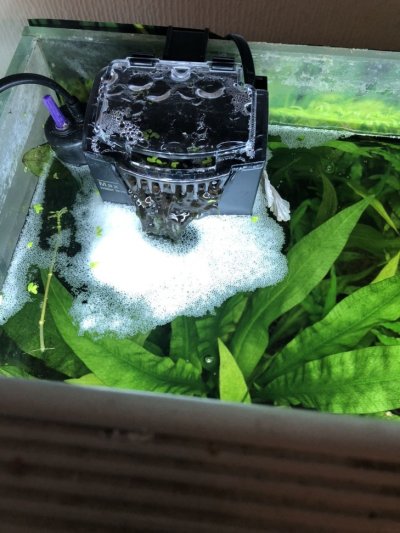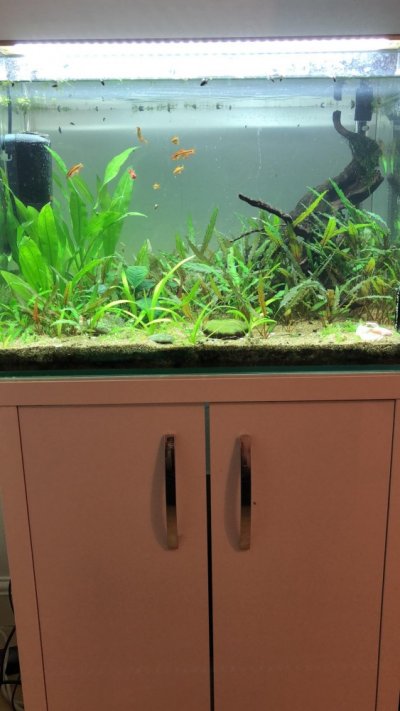Well….just been reading through some of my thread. So many pages and thousands of views. Most people have moved on now but FWIW I’ve transitioned so far from where it all began. I lost my way a lot.
My dad is a huge fisherman. Everyone knows him on the canal because he’s there every weekend. He doesn’t drive so can’t get out enough to fish the better waters so this year I’m going to take him out more so he’s not relying on my uncle’s. Anyway I digress, my point really was that fish have always been interesting to me or rather, the aquatic ecosystem. It runs in the family. In fact, any time I’ve had pets I’ve always tried to make them as comfortable as possible by trying to recreate their natural environment and looking for foods they would normally eat.
I must have been about 10-11 years old when I saw my Uncle’s tank for the first time in his living room. I’ll never forget what I saw even though it is a vague recollection. Very dark, dingy, tea stained, 4ft tank full of neon tetras.
The fish were always super bright, zippy and healthy. The tank looked so dirty. But it looked so natural to me with the plants and the wood.
I remember speaking to another uncle of mine. My auntie is german and he said when they went back to Germany after a year to see her family he remembers her tank of Tiger Barbs as they left it. When he came back he said you couldn’t see the barbs anymore because the plant mass was right up to the glass. He said when he did catch a glimpse of the barbs he couldn’t believe how big they were. I asked him about the maintenance and he said his wife’s mum was too old to do water changes so all she was asked to do was feed them.
I hold on to memories like these because they tell me that things can work. I’ve always had this feeling about letting nature be without being an activist in any way, it just feels right to me to leave things alone.
People will always say aquariums aren’t natural but the processes couldn’t be any more natural. The cycles still exist and they expand way beyond the nitrogen cycle.
My fish have always done better with minimal interference from me. I top up the water and occasionally replace some of it with RO. I feed heavily live and dry. I use plants that like my water. Plants that die I never use again.
Anyway, here she is



Betta is much happier after I replaced the heater that packed in. Temp was 20 degrees and got it back up to 24 recently. I came home the other day and thought someone had poured washing up liquid in to the tank there were that many bubbles. It was way worse than the bubbles in the picture attached. They were everywhere.
Tank inhabitants are
8 cherry barbs including 2 males the males are such a deep red. They have their own territories and there’s enough females to disperse the aggression. They are always showing mating behaviour.
3 ottos,
1 betta,
3 nerite snails I’ve had for years
Amano shrimp
Malaysian trumpet snails.
I rarely clean the overflow filter. I put some moss inside it with the sponge. I just let the water flow over the sponge and I allow mulm to collect on the substrate. The tank is left alone.
Ph 7.2
0 ammonia
0 nitrite
10 nitrate surprisingly although I did add some soil capsules to the substrate
TDS 150 I want to get this to about 70 then I’ll be topping up only.




